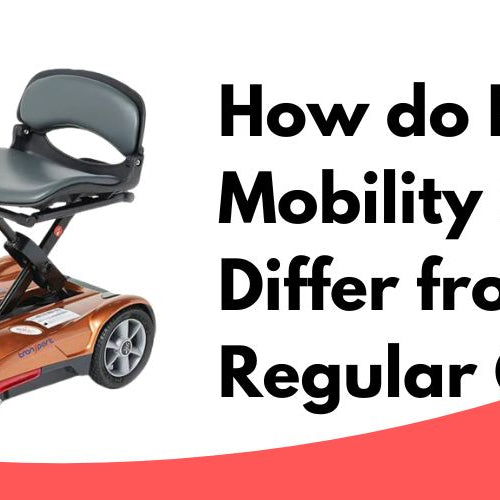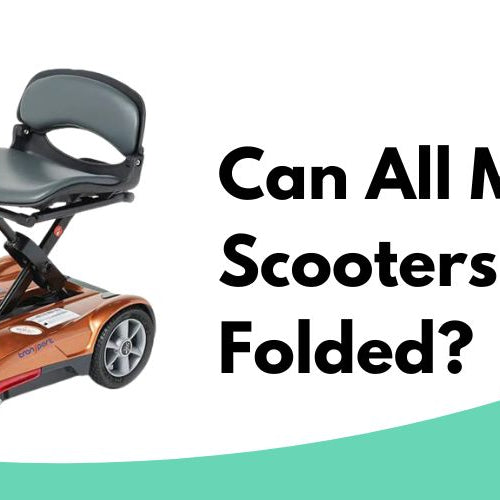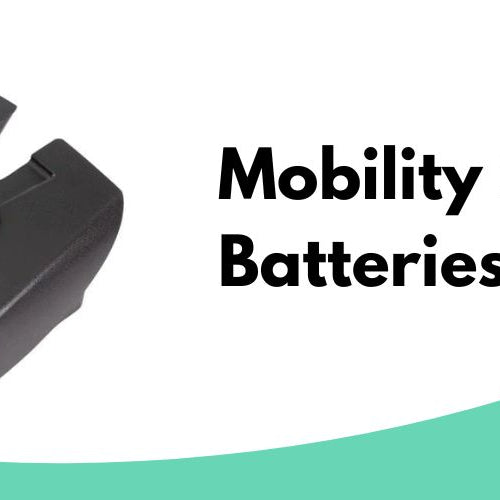Lightweight mobility scooters provide an invaluable service for individuals with mobility issues, offering increased independence and the ability to navigate a variety of environments. The cost of these scooters can vary widely based on factors such as design, features, and the materials used in construction. Consumers look at prices starting around $1,874, a reflection of the advanced technology and convenience these scooters provide. It's not just the initial purchase price that matters; buyers should also consider long-term costs like maintenance, battery replacements, and any potential financing options.
With the market offering a diverse range of models, the selection process of a lightweight mobility scooter becomes a question of matching personal needs with the appropriate price point. The best lightweight mobility scooters are distinguished not only by their weight but also by features that may include adjustable armrests, controls designed for limited dexterity, and the versatility to be used both indoors and outdoors. While some may seek the most economically priced options, others prioritize features that offer the best legroom or comfort, impacting the overall cost.
As the demand for mobility scooters grows, so does the importance of making an informed decision that balances cost with functionality. Forbes Health, among others, provides rankings and data on various models to aid consumers in selecting a scooter that offers the best value for the price. Potential buyers often weigh the benefits of models such as the Vive 3-wheel mobility scooter, noted for its lightweight design, against their personal budget constraints. Ultimately, investing in a mobility scooter is an investment in one's quality of life, a factor that is invaluable.
Understanding Mobility Scooters
Mobility scooters are instrumental for individuals with mobility issues, offering freedom and independence. This section dives into the different types of scooters, their essential features, technology advancements, a comparison between lightweight and heavy-duty models, safety considerations, and their relevance to various health conditions.
Varieties of Mobility Scooters
There are primarily two types of mobility scooters: 3-wheel scooters, which offer better maneuverability with a smaller turning radius, and 4-wheel scooters, which provide increased stability, especially on uneven terrain. In 2024, foldable and lightweight mobility scooters are popular for their portability and ease of transport.
Key Features of Mobility Scooters
Important features to consider when selecting a mobility scooter include speed, range, battery life, weight capacity, and size for compatibility with the user's lifestyle. Comfort is also vital, as users may spend extended periods on their scooters. Lithium-ion batteries are common due to their long life and relatively light weight.
Advancements in Mobility Scooter Technology
In recent years, mobility scooters have seen significant advancements in technology. Innovations include the integration of aluminum in frames for a light yet durable build, and the use of smart technology for diagnostic and tracking purposes.
Comparison: Lightweight Vs. Heavy-Duty Scooters
Comparing lightweight mobility scooters with heavy-duty scooters, one finds that the former are designed for convenience and ease of transport, sometimes featuring a folding mechanism. In contrast, heavy-duty scooters focus on performance and durability, often accommodating a higher weight capacity and suited for varied terrain.
Safety Standards and Regulations
Safety standards and regulations ensure that mobility scooters are safe for both the user and the public. These may include requirements on maximum speed, maneuverability, and the presence of lights or reflective elements.
Mobility Scooters and Health Conditions
Mobility scooters cater to individuals with various health conditions, such as disability, limited mobility, arthritis, or dexterity issues. Properly selected, a mobility scooter can significantly improve the quality of life by enhancing mobility and accessibility.
Benefits of Lightweight Mobility Scooters
A lightweight mobility scooter offers tangible advantages for users seeking effortless transportation and the ability to navigate different environments. It merges the ease of transport with the promise of an improved quality of life.
Ease of Transport and Portability
Lightweight mobility scooters are a game-changer for frequent travelers due to their portability. They often come as foldable units that can easily fit into a car trunk, making them ideal for travel. The reduced weight leads to less hassle and potentially lower transport costs.
Maneuverability and Compactness
When it comes to maneuvering in tight spaces, such as store aisles or narrow doorways, the compact nature of these scooters excels. They deliver superior maneuverability, with some models featuring an adjustable seat for added comfort and customization.
Independence and Quality of Life
These scooters foster independence, allowing users to perform daily tasks without assistance. The comfort and ease of use provided by lightweight mobility scooters contribute positively to the user's quality of life, enabling more frequent social and outdoor activities.
Indoor and Outdoor Versatility
Whether it's a trip to the mall or a day at the park, lightweight mobility scooters handle various terrains with ease due to durable tires suitable for both indoor and outdoor use. This versatility ensures users maintain an active lifestyle, regardless of the setting.
Key Specifications and Their Impact
When considering the purchase of a lightweight mobility scooter, the cost can be influenced by various key specifications that impact its performance, comfort, and durability.
Weight and Maximum Weight Capacity
The weight of a lightweight mobility scooter often falls below 100 pounds, which enhances its portability. Maximum weight capacity, commonly ranging from 250 to 350 pounds, directly affects the frame's structure and the scooter's price, with higher capacities typically demanding a higher cost.
Battery Performance Factors
Battery life and charge time are critical. A longer battery life means extended travel range but may increase the price. Typical battery performance allows for a distance of around 8 to 15 miles per charge, depending on the model.
Speed and Travel Range
The speed of a scooter is usually about 4 to 5 miles per hour, affecting how quickly a user can reach their destination. Travel range, the total distance a scooter can cover on a single charge, not only impacts the user's mobility but can also reflect in the scooter's cost, with longer ranges commanding higher prices.
Adjustability and Comfort Features
Comfort features like an adjustable seat, armrests, footrest, and adjustable tiller are essential. The more adjustable and comfortable a scooter is, the higher its market price, as more intricate mechanisms and superior materials are employed for these features.
Durability and Material Quality
Quality of materials, such as aluminum, affects durability. High-quality, lightweight materials that offer enhanced durability may contribute to a premium price tag on a mobility scooter.
Safety and Control
Features such as an easy-to-use control panel and efficient brakes are pivotal for safety. Higher-end models sporting advanced safety features can increase costs due to the additional technology and design precision required.
Cost Factors of Lightweight Mobility Scooters
When considering a lightweight mobility scooter, potential buyers should examine several cost factors, including price variations, insurance possibilities, and long-term value.
Price Ranges and Budget Considerations
Lightweight mobility scooters can range from $750 to $3,000, depending on features and quality. Prospective buyers should set a budget that considers their specific needs, for example, if a foldable option or enhanced armrests are required, and balance that with acceptable quality and warranty provisions.
Insurance Coverage and Funding Options
Some scooters may be covered by insurance plans, including Medicare or Medicaid. It's important to confirm whether your choice qualifies for such funding options. Additionally, alternative financing could be available from the vendors.
Cost-Effectiveness and Long-Term Value
An affordable initial price might be attractive, but buyers should also contemplate the scooter's long-term value and warranty. High-quality models, like the iLiving V8 or BuzzAround LX, may offer greater durability and fewer long-term costs.
Accessories and Customization Costs
Customization, like adding foldable features or improved armrests, incurs additional expenses. Accessories improve comfort and usability but increase the overall cost. Buyers should identify essential features to balance customization with the budget.
Brand and Market Comparisons
Comparing different brands, such as Golden Technologies, provides insight into the market range. Quality and warranties vary across brands, affecting long-term cost and value.
Maintenance and Repair Expenses
Maintenance and repair should be factored into the total cost of ownership. A model with a low price might have higher long-term repair expenses, reducing its affordability. Regular maintenance can also extend the quality and lifespan of the scooter.
Buyers must evaluate all these factors to ensure they select a lightweight mobility scooter that offers the best balance between cost, quality, and the benefits it will provide.
Purchasing Guidelines
When selecting a lightweight mobility scooter, considering cost and where to purchase are key to finding the best value and fit for one's needs.
How to Choose the Best Lightweight Mobility Scooter
To select the best lightweight mobility scooter, assess the features pertaining to comfort, quality, and requirements matched against the price. Look for scooters that provide adjustable seating, easy-to-use controls, and adequate battery life. Lightweight scooters can vary largely in price:
-
Affordable Range: Starting from around $999.
-
Mid-Range: Typically between $1,514 and $1,799.
-
High-End: May exceed $3,000 for ultra-lightweight models with advanced features.
It’s important to compare the weight capacity and total weight of various models; ultra-lightweight scooters may be more expensive due to their advanced materials and construction.
Where to Buy: Dealers and Online Marketplaces
Purchasing from a reputable dealer or online marketplace can lead to different levels of accessibility, warranty, and service options. Retailers like Mobility Nest may offer a curated selection with expert guidance.






Leave a comment